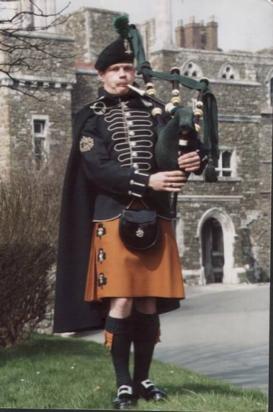|
The Irish Military KiltAnd of course it is not hard to see the main difference when viewed side by side, this Military Kilt is one solid colour usually Saffron, whereas the Scottish one is tartan. Saffron is a natural dye extracted from the Crocus flower, as has been used by the Celts of Northern Europe since around the time of Christ. I have come across research which suggests that Saffron was also used in Scotland from around the 1600's. And that its use died out due to the high cost of obtaining the dye. Although still used by the gentry for a little time longer, the ordinary poorer folk began wearing tartan cloth, which developed into the modern kilt. The story was very similar in Ireland, where the peasants could no longer afford the cost of the Saffron dyes and the wearing of the Saffron Kilt almost died out completely. Due though to a great Celtic revival by the Irish aristocracy in the 18th Century, the tradition of the Saffron Kilt was kept alive. The Irish version of the Military Kilt, goes back to at least 1859 when the Royal Tyrone Fusiliers Militia appointed pipers.
Military Kilt of Ireland, Photograph © Copyright The Royal Irish Rangers The Saffron Kilt as seen in the picture is the original design, it is worn by the Royal Irish Rangers, and carries all three badges of its former regiments. Return from Irish Military Kilt to Men in Kilts Page |




